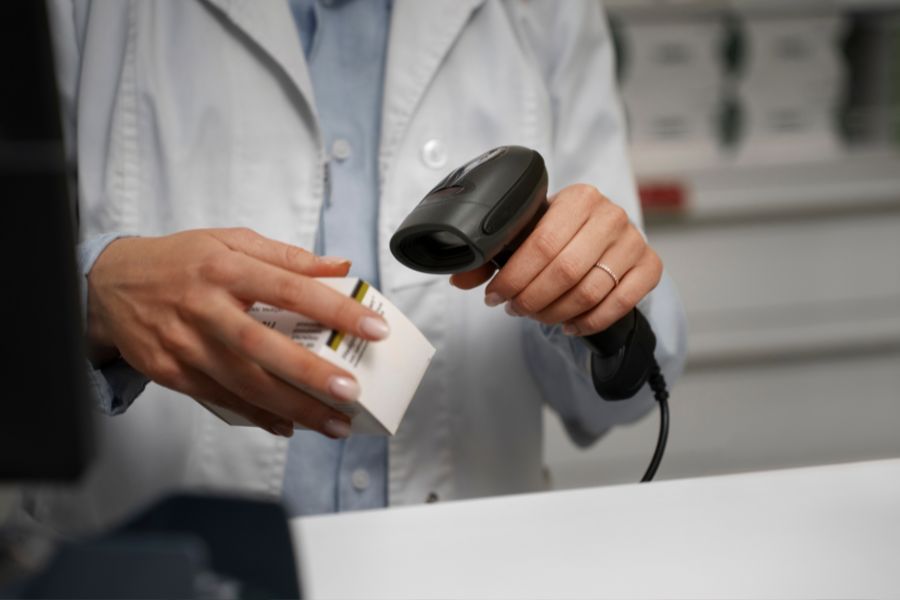In the ever-evolving realm of retail, mastering the art of seamless operations is paramount. Enter Shopify POS API, a dynamic force reshaping the landscape of retail without the complexities of coding. This game-changing tool unlocks a realm of possibilities for businesses seeking dominance. As we delve into its intricacies, the prowess of Shopify POS API becomes evident—a true secret weapon. Let’s explore how this innovation redefines retail, empowering businesses to thrive effortlessly.
What is Shopify POS API?
Shopify POS API, or point-of-sale application programming interface, is a powerful tool provided by Shopify to enhance the functionality of its point-of-sale (POS) system. In essence, it serves as a bridge between the Shopify POS system and external applications, allowing seamless communication and integration. This API is specifically designed to optimize in-store retail operations, offering a range of features that contribute to a more streamlined and efficient business environment.
The primary purpose of Shopify POS API is to empower retailers with advanced capabilities that go beyond the standard functionalities of a traditional point-of-sale system. By integrating this API into their operations, retailers can access real-time data, streamline inventory management, and provide a more personalized and efficient customer experience. Shopify POS API facilitates a seamless connection between various components of retail operations, enabling businesses to make data-driven decisions, improve order processing, and ultimately elevate their overall retail strategy. In essence, it acts as a catalyst for modernizing and optimizing the retail landscape, helping businesses stay competitive in the ever-evolving market.
Key features of Shopify POS API
In the dynamic world of retail, having a robust point of sale (POS) system is essential for success. Shopify’s POS API is a game-changer, offering a suite of key features that empower businesses to streamline operations, enhance customer experiences, and drive growth. Let’s delve into the core functionalities that make Shopify POS API a must-have for retailers.
- Comprehensive sales data: Gain unparalleled insights into your business’s performance with the Shopify POS API. Access detailed and real-time sales data, including transaction history, customer preferences, and popular products. This feature enables data-driven decision-making, helping you identify trends and opportunities to optimize your sales strategy.
- Real-time inventory management: Efficient inventory management is crucial for preventing stockouts and overstock situations. The Shopify POS API provides real-time updates on inventory levels, allowing you to track product availability accurately. This feature ensures that your customers have a seamless shopping experience by always having the right products in stock.
- Customer information handling: Personalization is key to fostering customer loyalty. With the Shopify POS API, effortlessly manage customer information, including purchase history and preferences. Deliver tailored experiences by understanding your customers better, building stronger relationships, and encouraging repeat business.
- Seamless payment integration: Ensure a smooth and secure checkout process with seamless payment integration. The Shopify POS API supports various payment methods, providing flexibility for both you and your customers. From credit cards to digital wallets, offer a range of payment options to meet diverse customer preferences.
- Flexible discount and promotion management: Adapt to changing market demands and boost sales with the flexible discount and promotion management feature. Easily create and manage discounts, promotional offers, and loyalty programs directly from the POS system. This capability empowers you to implement targeted marketing strategies and drive customer engagement.
- Efficient order processing: Streamline your order processing workflow for faster and more accurate transactions. The Shopify POS API ensures an efficient order fulfillment process, reducing errors and enhancing the overall customer experience. Whether in-store or online, orders are processed seamlessly, contributing to customer satisfaction and loyalty.
- Comprehensive reporting and analytics: Evaluate your business’s performance with comprehensive reporting and analytics tools. The Shopify POS API provides detailed insights into sales trends, customer behaviors, and inventory turnover. Utilize this data to make informed decisions, identify areas for improvement, and optimize your overall retail strategy.
- Seamless third-party integration: Extend the capabilities of your POS system by seamlessly integrating with third-party applications. The Shopify POS API allows you to connect with other tools and services, such as accounting software or marketing platforms, expanding the functionality of your retail ecosystem. This flexibility ensures that your business stays ahead in a rapidly evolving marketplace.
Benefits of incorporating Shopify POS API in retail operations
In the dynamic world of retail, staying ahead requires adopting innovative solutions that can revolutionize the way you do business. The Shopify POS API stands out as a game-changing tool, offering a multitude of benefits that can transform your retail operations. Let’s explore the key advantages:
- Enhancing customer experience: One of the foremost benefits of incorporating the Shopify POS API is the ability to enhance the overall customer experience. By seamlessly integrating your point-of-sale system with Shopify’s robust API, you can personalize interactions, offer targeted promotions, and streamline the checkout process. This level of customization fosters customer loyalty and satisfaction, encouraging repeat business.
- Optimizing sales processes: Efficiency is the backbone of successful retail operations. The Shopify POS API empowers businesses to optimize their sales processes, from point of purchase to order fulfillment. With a unified system that provides real-time data and insights, you can expedite transactions, reduce errors, and ultimately boost sales.
- Efficient inventory management: Managing inventory can be a complex task, but the Shopify POS API simplifies the process. Keep track of stock levels, update product availability in real-time, and prevent overselling. This ensures that your customers always find the products they desire, leading to increased satisfaction and loyalty.
- No hidden fees: In the realm of business, financial transparency stands as a cornerstone. With the POS system ConnectPOS, this principle is elevated, as the integration with the Shopify POS API ensures that your journey is free from the shadows of hidden fees. Revel in the benefits of advanced retail capabilities without the looming uncertainty of unexpected charges. The pricing model is straightforward, allowing you to meticulously plan your budget, and granting you the peace of mind that your financial roadmap remains clear and devoid of unwelcome surprises.
- Customization for Shopify and Shopify Plus: ConnectPOS is your partner in customization, helping you create a store that fits your brand and your business needs. As ConnectPOS integrates with both Shopify and Shopify Plus, it will give you the power to transform your store with the Shopify POS API. No matter which platform you choose, you can customize every aspect of your store with ConnectPOS. With ConnectPOS, you can adapt to the changing retail market and scale your business with ease.
Unlocking the power of Shopify POS API without coding
User-friendly interface of Shopify POS API
- Intuitive design: Shopify understands that not every retailer is a coding expert. That’s why the Shopify POS API comes with an intuitive design, ensuring that users with varying technical backgrounds can navigate the system effortlessly.
- Visual workflows: The interface incorporates visual workflows, making it easy for users to understand and implement various functions. This ensures that tasks such as sales data analysis, inventory management, and customer information handling can be carried out with minimal effort.
- Drag-and-drop functionality: Say goodbye to the complexities of coding syntax. The Shopify POS API interface allows for drag-and-drop functionality, enabling users to customize and arrange elements seamlessly. This feature is especially handy when designing unique and personalized experiences for your customers.
- In-depth documentation: Even without coding knowledge, users can rely on comprehensive documentation provided by Shopify. The documentation serves as a guide, explaining the functionalities and processes clearly and concisely. This ensures that users can make the most out of the API without feeling overwhelmed.
- Built-in tutorials: To further simplify the learning curve, Shopify POS API comes equipped with built-in tutorials. These tutorials walk users through the various features step by step, empowering them to harness the full potential of the API without the need for external assistance.
- No coding required: The standout feature of Shopify POS API is its no-coding approach. Retailers can implement and optimize the API without the need for a dedicated development team. This democratizes the use of advanced technology, putting the power of customization directly in the hands of business owners and staff.
- Configuration, not coding: Instead of writing lines of code, users can focus on configuration. Customize your POS system by adjusting settings, preferences, and layouts according to your business requirements. This ensures a tailored solution without the complexities of coding.
- Plug-and-play integration: Shopify POS API is designed for seamless integration. Users can easily connect their POS system with other applications and services through a plug-and-play approach. This simplicity enables retailers to expand their capabilities without the need for intricate coding procedures.
No-coding approach to utilize API’s capabilities
- Understanding the no-coding approach: Traditionally, integrating APIs into a system requires a deep understanding of programming languages. However, Shopify has revolutionized this process by designing the POS API with a no-coding approach. This means that even if you lack coding expertise, you can still leverage the API’s capabilities to enhance your retail operations.
- No-coding tools and guides: Shopify provides a range of no-coding tools and guides to help businesses make the most of the POS API. These tools are designed to be intuitive, allowing users to perform various tasks and integrations without writing a single line of code. Whether you’re managing sales data, updating inventory, or processing orders, these tools make the process accessible to everyone.
- Time and cost efficiency: the no-coding approach significantly reduces the time and cost associated with API integration. Businesses can implement changes and enhancements without waiting for a developer, making updates more agile.
- Accessibility for all: with no coding required, Shopify POS API becomes accessible to a broader audience within the business. Store owners, managers, and staff members can actively participate in utilizing the API’s capabilities.
- Rapid implementation: the streamlined, no-coding tools enable businesses to implement changes rapidly. This agility is crucial in the fast-paced retail environment, allowing for quick adjustments to meet market demands.
- Reduced dependency on developers: by eliminating the need for coding expertise, businesses reduce their dependency on developers. This ensures that even small and medium-sized enterprises can leverage the power of the API without a dedicated technical team.
- Embracing the future of retail technology: as the retail landscape continues to evolve, the ability to adapt quickly becomes a competitive advantage. Shopify POS API’s no-coding approach allows businesses to embrace the future of retail technology without the barriers of coding complexities. It democratizes the use of advanced tools, putting the power to innovate directly in the hands of those who understand their business best.
Considerations when using Shopify POS API
As retailers embrace the transformative capabilities of the Shopify POS API, ensuring the security of customer information and keeping abreast of updates and API versions become paramount considerations for a successful and secure integration.
Ensuring customer information security
- Encryption and secure transmission: prioritize the use of encryption protocols to safeguard the transmission of customer data between your POS system and the Shopify API. This ensures that sensitive information remains confidential and protected during online transactions.
- PCI DSS compliance: adhere to payment card industry data security standard (PCI DSS) guidelines to maintain the security of cardholder information. Complying with these standards helps prevent data breaches and instills trust in your customers.
- Data access controls: implement stringent access controls to limit the individuals who can access and modify customer data. Regularly review and update access permissions to mitigate the risk of unauthorized access.
- Regular security audits: conduct regular security audits to identify and address vulnerabilities in your POS system. Regular monitoring helps detect and respond to potential threats before they compromise customer information.
Managing updates and API versions
- Stay informed about API changes: regularly check for updates and changes to the Shopify POS API. Shopify often releases new features, bug fixes, and security patches. Staying informed ensures that your integration remains current and benefits from the latest enhancements.
- Test in a sandbox environment: before implementing updates or migrating to a new API version in your live environment, conduct thorough testing in a sandbox environment. This helps identify any potential issues or incompatibilities before they impact your customers’ experience.
- Backup and rollback procedures: establish robust backup procedures and a rollback plan in case an update or API version introduces unexpected issues. Having a contingency plan minimizes downtime and potential disruptions to your business operations.
- Developer documentation review: regularly review the Shopify developer documentation for any changes to API endpoints, authentication methods, or best practices. This ensures that your development team is aware of any updates and can adjust your integration accordingly.
- Communicate with your development team: maintain open communication with your development team or third-party developers. Discuss upcoming changes, plan for updates collaboratively, and address any concerns or challenges that may arise during the integration process.
Conclusion
Shopify POS API is the catalyst for redefining your retail narrative. Its prowess explored in-depth throughout this guide, empowers businesses without the need for coding expertise. To unlock the full potential, explore ConnectPOS—a trusted companion on this journey. For more insights and personalized assistance, connect with us at contact us. Elevate your retail game with Shopify POS API and ConnectPOS – your gateway to unparalleled success!
ConnectPOS is a all-in-one point of sale solution tailored to meet your eCommerce POS needs, streamline business operations, boost sales, and enhance customer experience in diverse industries. We offer custom POS with features, pricing, and plans to suit your unique business requirements.




